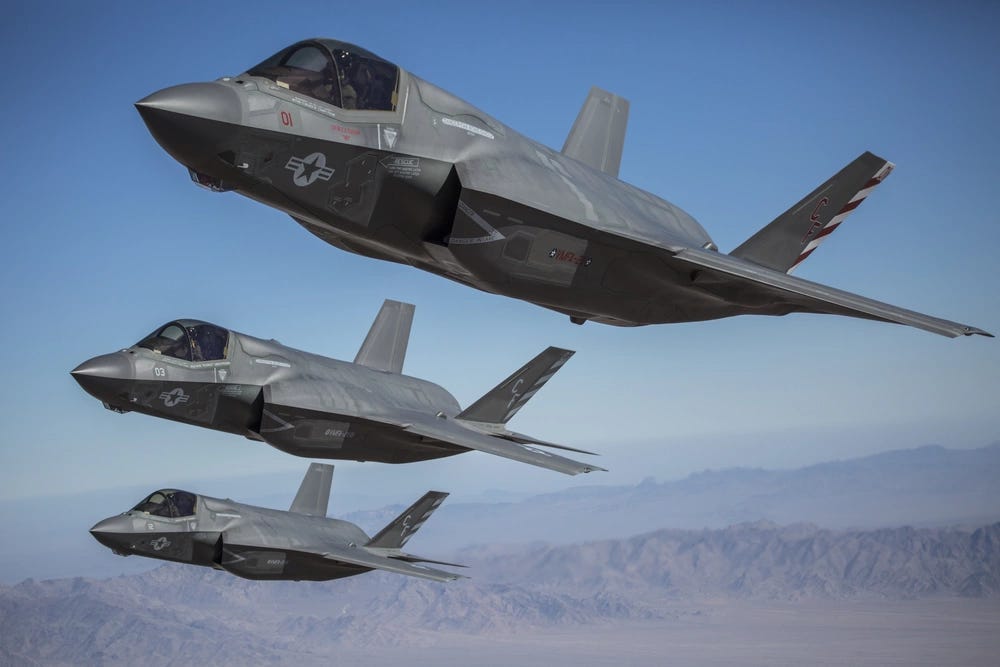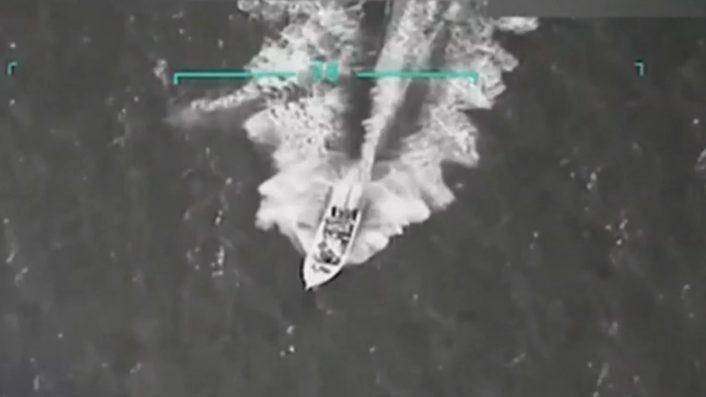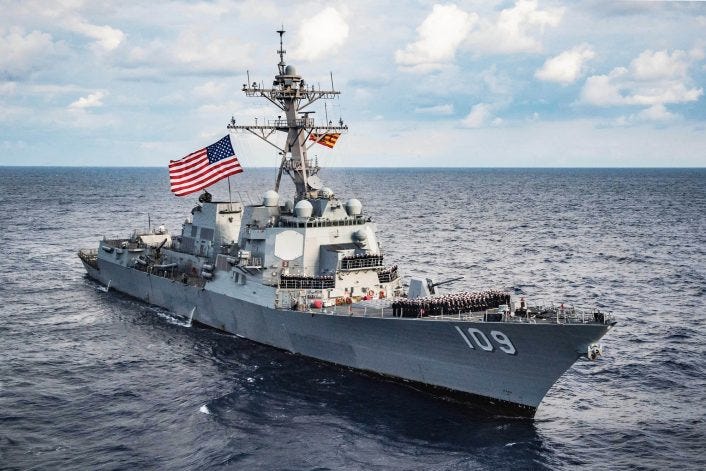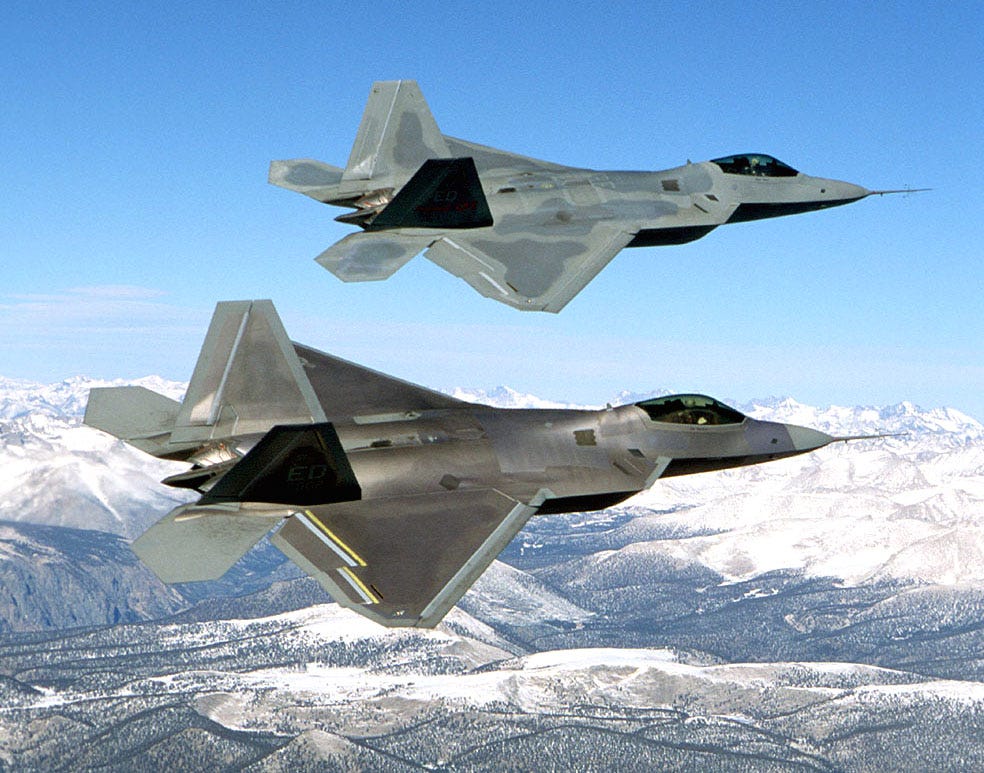Stealth on the Front Lines: F-35s Deploy as F-22 Legacy Marks 28 Years
From the F-22’s maiden flight in 1997 to F-35s deploying to the Caribbean today, U.S. stealth fighters continue to shape both history and strategy.
“Air dominance is the foundation of everything the Air Force does. If you lose the skies, you lose the fight.”
— General Mark A. Welsh III, former Chief of Staff of the U.S. Air Force
Mission Briefing
The Lightning’s first air to air victory could be against one of the aircraft it was meant to replace: The F-16 Fighting Falcon aka Viper. Here’s why: ten F-35 Lightning II stealth fighters are set to deploy to Puerto Rico next week as part of ongoing U.S. counter-narcotics operations in the Caribbean. According to Reuters, which first reported the move on Sept. 5, 2025, the deployment comes after two Venezuelan F-16s flew close to a U.S. vessel. Hours later, the same Venezuelan fighters conducted another flyover, this time above the USS Jason Dunham. My guess is that if these overflights continue, either a Navy SM-2 or one of the aforementioned F-35s will have a thing to two to say about that.
U.S. Response to Venezuelan Provocations
The Pentagon condemned the first flyover as a “highly provocative move […] designed to interfere with our counter narco-terror operations.” Officials confirmed President Trump is weighing options for strikes against drug cartels based in Venezuela. Around the same time, three KC-46A tankers quietly arrived at St. Croix in the U.S. Virgin Islands, though details on their mission remain sparse.
Which F-35 Variant?
It remains unclear whether the U.S. will deploy the Air Force’s F-35A or the Marine Corps’ F-35B. The F-35B offers the flexibility of operating from amphibious assault ships such as the USS Iwo Jima, already in the region. Ship-based operations would bring the fighters closer to contested waters and provide mobility and unpredictability. F-35As, on the other hand, could launch directly from Puerto Rico, potentially flying extended routes without relying on tankers.
While some view the deployment as posturing for potential strikes, officials stress the immediate goal is deterrence. The F-35’s strength lies not only in its ability to strike but also in its advanced intelligence-gathering. With a powerful AESA radar and a suite of integrated sensors, the aircraft serves as an ISR platform that can collect, fuse, and share data in real time. This makes it a force multiplier, improving situational awareness across the battlespace.
Background: A Strike at Sea
The deployment follows a Sept. 2 strike in which U.S. forces destroyed a suspected Venezuelan drug vessel, killing 11 aboard. It was the first use of direct U.S. military force against a cartel’s maritime operations since the recent surge of naval presence in the region. Washington asserted the target was tied to Tren de Aragua, a Venezuelan gang designated a Foreign Terrorist Organization earlier this year. President Trump accused Venezuelan President Nicolás Maduro of sheltering the group and doubled the U.S. bounty on Maduro to $50 million. Caracas denies the claims.
Venezuela Pushes Back
President Maduro condemned the U.S. buildup as an “extravagant threat” and pledged “maximum readiness.” Communications Minister Freddy Ñáñez even suggested Trump’s released video of the strike was “artificially generated,” citing “stylized and unnatural” water effects. Venezuelan officials maintain Tren de Aragua was dismantled in a 2023 prison raid and accuse Washington of using counter-narcotics as a cover for regime-change ambitions.
A Growing U.S. Presence
Seven U.S. warships and one nuclear-powered submarine are now in the Caribbean, supported by about 4,500 sailors and Marines. Among them are the USS San Antonio, USS Iwo Jima, USS Fort Lauderdale, USS Lake Erie, USS Gravely, and USS Jason Dunham. U.S. P-8 patrol aircraft have also flown surveillance missions. The Dunham has twice been overflown by Venezuelan fighters, though no U.S. ship has yet responded with force.
Escalation Risks
The Sept. 2 strike marked a shift in U.S. posture, but further escalation looms. President Trump has authorized commanders to respond directly if Venezuelan jets endanger U.S. vessels. “If they do put us in a dangerous position, they’ll be shot down,” he told reporters. In previous encounters, the Dunham withheld fire. Now, that restraint may not last.
This Week in Aviation History
7 September 1997 – The First Flight of the F-22 Raptor
At 10:18 a.m. on September 7, 1997, Lockheed Martin Chief Test Pilot Alfred P. “Paul” Metz pushed the throttles forward at Dobbins Air Reserve Base in Marietta, Georgia. Moments later, “Raptor 01,” the first F-22A Block 1 prototype, roared into the sky on its maiden flight. Two F-16 chase planes accompanied the new stealth fighter as it climbed to 20,000 feet, completing just under an hour of successful flight testing.
The flight was the culmination of years of development in the U.S. Air Force’s Advanced Tactical Fighter (ATF) program—a competition that had pitted Lockheed’s YF-22 against Northrop’s YF-23. Ironically, Paul Metz had also piloted the YF-23 on its very first flight in 1990. Now, seven years later, he was again at the controls, this time proving the future of American air superiority.
Metz’s career reflected the path of a true test pilot’s life. A graduate of Ohio State University and a Vietnam veteran with 68 combat missions in the F-105G Thunderchief “Wild Weasel,” he earned two Distinguished Flying Crosses before attending the Air Force Test Pilot School at Edwards. His post-Air Force career took him to Northrop, where he flew the B-2 Spirit stealth bomber, and later to Lockheed Martin, where he became chief test pilot for the F-22. He would go on to contribute to the F-35 program before retiring in 2006 as Vice President for Flight Test.
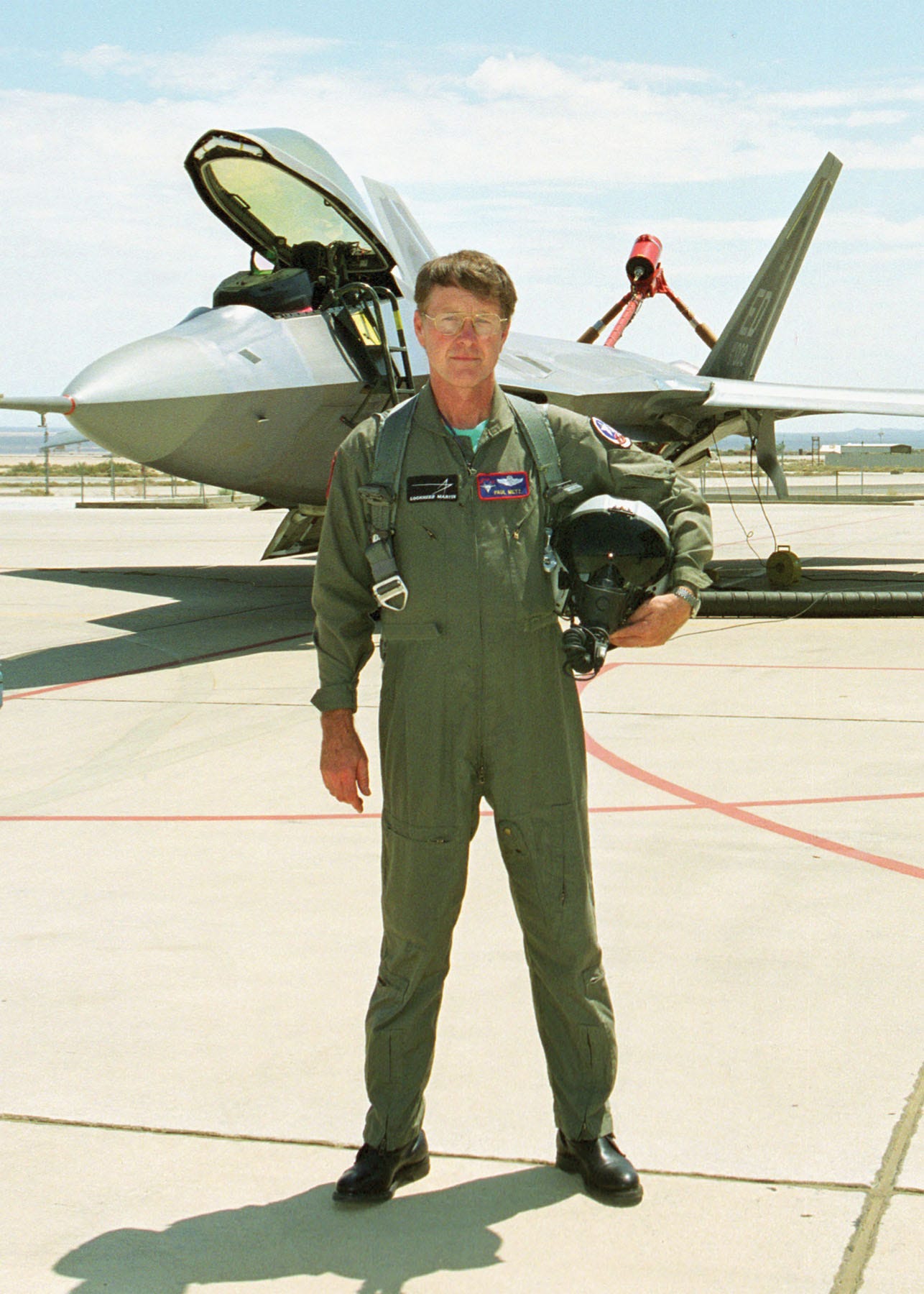
That first flight of “Raptor 01” set the stage for one of the most advanced fighters ever built. By 2003, the F-22 entered service, offering unmatched stealth, speed, and maneuverability. Though its production ended prematurely in 2012, the Raptor remains the benchmark for air dominance fighters worldwide.
Sidebar: The F-22 Raptor at a Glance
Dimensions: 62 ft, 1 in length; 44 ft, 6 in wingspan; 16 ft, 8 in height
Weight: 43,340 lbs empty; 83,500 lbs max takeoff
Engines: Two Pratt & Whitney F119-PW-100 afterburning turbofans with thrust-vectoring nozzles
Performance:
Max speed: Mach 2.25
Supercruise: Mach 1.82 (without afterburner)
Service ceiling: 65,000+ ft
Combat radius: 470 miles
Armament:
20mm M61A2 Vulcan cannon (480 rounds)
AIM-9 Sidewinders and AIM-120 AMRAAMs
Precision strike capability for ground attack
Service: Entered operational service in 2005. A total of 195 built before the line closed in 2012.
Even today, nearly three decades after that first flight, the F-22 remains the aircraft every rival nation measures against. The Raptor was envisioned as a replacement for the F-15 Eagle, and speaking of the Eagle:
In Case You Missed It
You could make the argument that the F-15 is the greatest fighter of all time:
Photo Outlet
Every issue of Hangar Flying with Tog gets you a free image that I’ve taken at airshows:
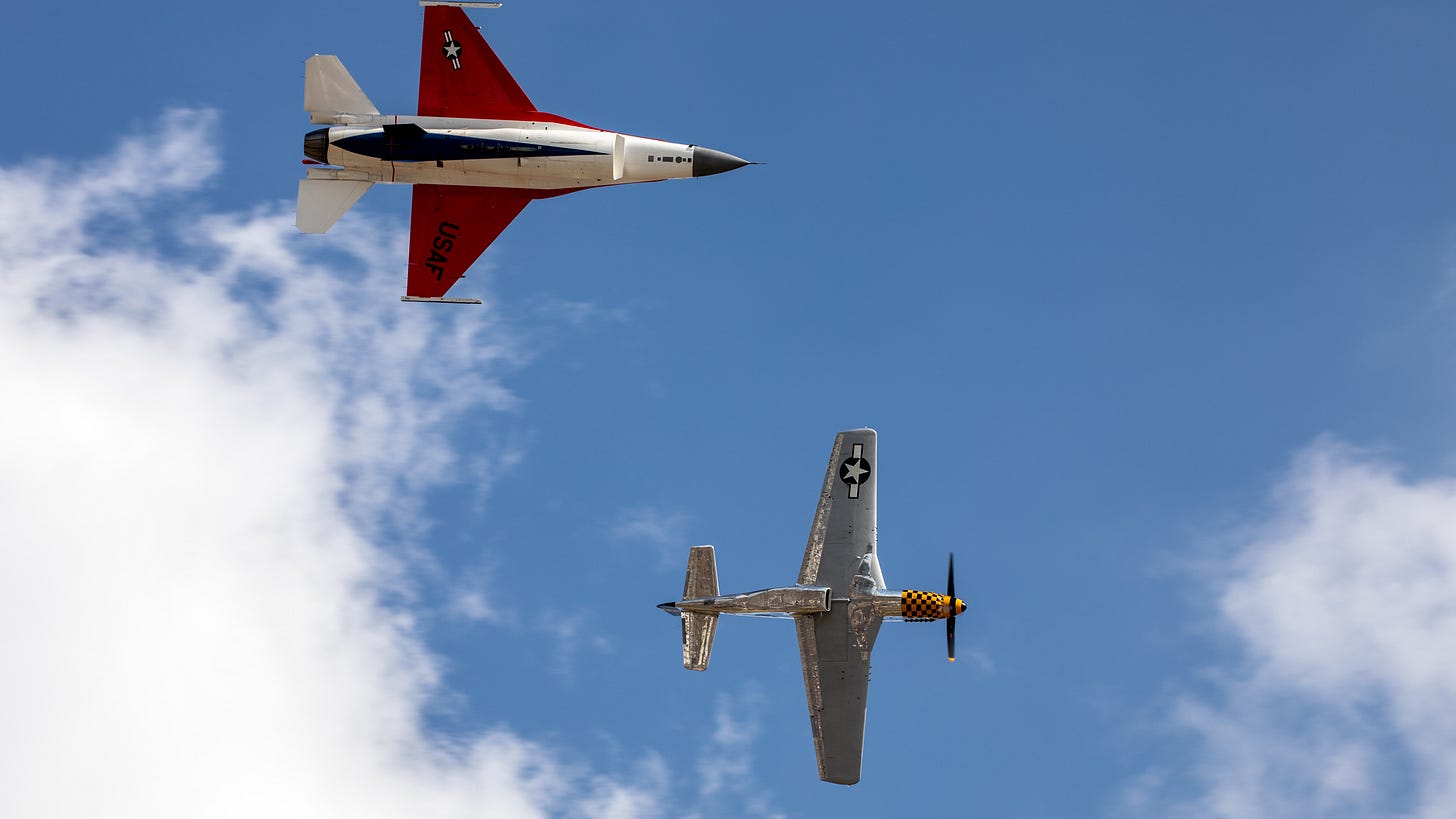
Feel free to use these photos however you like, if you choose to tag me, I am @pilotphotog on all social platforms. Thanks!
Post Flight Debrief
Like what you’re reading? Stay in the loop by signing up below—it’s quick, easy, and always free.
This newsletter will always be free for everyone, but if you want to go further, support the mission, and unlock bonus content, consider becoming a paid subscriber.
Your support keeps this flight crew flying—and I couldn’t do it without you.
– Tog



